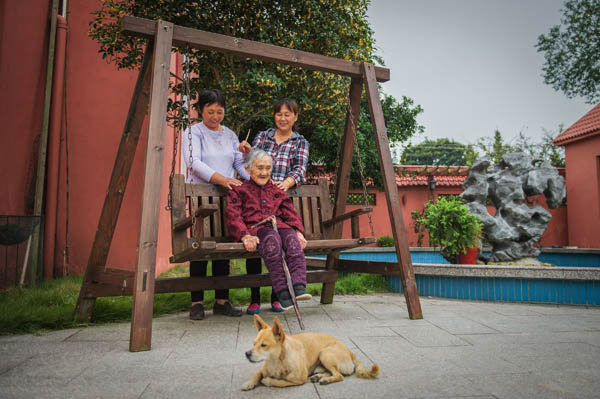The nation's aging future in a nutshell
China Daily, January 6, 2015 Adjust font size:
 |
|
Yin Guifang, 103, stays with her two granddaughters in Rudong, Jiangsu province on Sep 30, 2014. [Photo/Xinhua] |
But that's all history now. This fall semester, the school's 10th grade has only 17 classes, each of which has only about 50 students.
"In addition to the declining number of local students, a ban on accepting non-locals that came into force in 2014 has also contributed to the shortfall," Chen said, adding that the county's junior high schools have been affected by the same trend. Statistics from the education bureau show that in recent years the number of students eligible to attend the county's junior high schools has been shrinking by 1,000 students annually.
Chen, who has devoted nearly three decades to education, believes the present situation is sad, but said there's nothing he or his colleagues can do.
Sitting in a meeting room at the education bureau's wood-floored office building, the 50-something Rudong native shook his head when asked how the situation developed. "The birth rate is too low. Every year, the number of newborns is only half the number of deaths in the county."
Rudong was once renowned as one of the counties that had best implemented the national family-planning policy that restricted most couples to one child.
In fact, the county was a pioneer. Although China's family planning program officially started in the 1970s, Rudong voluntarily introduced the policy in the 1960s. The move resulted in a low birthrate in the 1970s, just as other parts of China were just beginning to implement the policy.
Chen Youhua, a professor of demographics at Nanjing University, said that only three factors can change the age structure of a region's population-birth, death, and emigration.